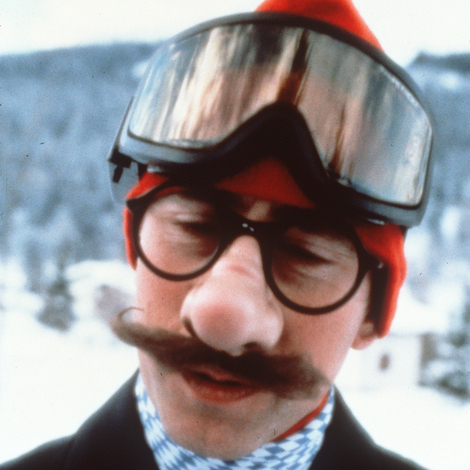“I saw him today—the boy who got burned.”
This was my little sister, Lindsay, talking. We were having dinner with our mother in the kitchen of our brownstone on St. John’s Place in Park Slope, Brooklyn, sometime in the mid-1970s.
We didn’t know the boy’s name, the boy who got burned, but we knew what happened, because everyone in Park Slope knew what happened: he opened the gate of his family’s house on President Street, and a “crazy man” poured a cup of acid on his head. “Crazy man” had been my mother’s turn of phrase when she told me about it, practically in tears, the day it happened.
This event, this acid attack, was a dark memory from my childhood. I even came to wonder if it was true. So one day when I was deputy Metro editor at The New York Times, in the early teens, during a rare lull, I did some sleuthing around in the archives. I found a short article about a boy burned with acid in Park Slope in 1973. His name was Joshua Miele.
A Google search later and I was looking at a man with that name who was a Ph.D. scientist working at a nonprofit in San Francisco. He was blind and had a scarred face.
The story was real, after all.
But it had only been the beginning.
In late 2012, I started working on an article about Josh for The New York Times. I was anxious the first time I met him, at a Scandinavian-themed coffee shop in Park Slope—and indeed, he looks different than your average person walking down the street—but any worry dissipated in seconds. It turned out that he was very much like me.
Fast-forward to today: We’ve been friends for more than 10 years. I know his wife and kids, and he knows mine. We’ve spent time in each other’s homes. Our childhoods in 1970s Park Slope gave us surprisingly similar worldviews and absurdist senses of humor. And now we’ve just published a book together.

Our book is called Connecting Dots: A Blind Life. It’s Josh’s life story, told in his quirky, at times hilarious voice. It’s not about the acid attack. I mean, it’s in there, recounted with a few quick narrative brushstrokes, but we move on quickly.
Here’s the thing: this event that loomed so large in my psyche was for Josh just a blip, a distant memory that he refused to let define him—and which he refused to let me define him with. For him it was an obstacle—more than an inconvenience, but much less than a tragedy—that had to be overcome. And overcome it he did. Spectacularly.
The book is about what happened next. From the day he got home from the hospital, Josh got cracking to build the best life possible, mastering the tools he needed to thrive as a blind person in a world built for the sighted. He was so determined to have a classic teenage life that, in fact, he went a bit overboard—playing bass in a band (as I did) but also running with a fast crowd and dropping and selling copious amounts of acid. But he got himself together and was accepted to the University of California at Berkeley, becoming the university’s first blind physics major.
Josh bears no ill will toward the person who attacked him: a delusional and deeply troubled army deserter suffering from schizophrenia. My mother’s choice of words might have been harsh, but it reflected the tenor of the times, when mental illness was not nearly as understood as it is today.
I’ve learned a lot from Josh, especially how I should perhaps be a more forgiving person. But also how I may have been ableist, unconsciously defining the disabled folks I knew by their disability. How the word choices I’d made as a journalist may have inadvertently reflected these built-in biases.
Beginning with our first meeting, we would kick around the book idea from time to time. But we needed an ending. Then, in 2021, Josh won a MacArthur “genius” award for all the cool tools he’s invented for blind people. While he humbly celebrated being publicly acknowledged for his hard-wrought accomplishments, I secretly and selfishly thought, “Bingo! We have the finale!” I was on a plane to San Francisco a week later. Sometimes you just need to wait for the pieces to come together.
Our mission was to get readers so wrapped up in Josh’s adventures, misadventures, and successes that they’d put the acid attack behind them, even forget about it, as Josh has. As I now have. I’d like to think we succeeded.
Wendell Jamieson, a former Metro editor at The New York Times, is the author of three books

